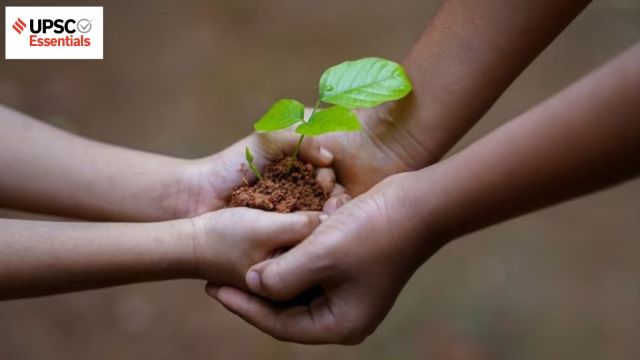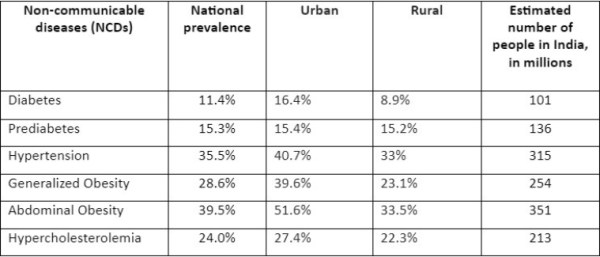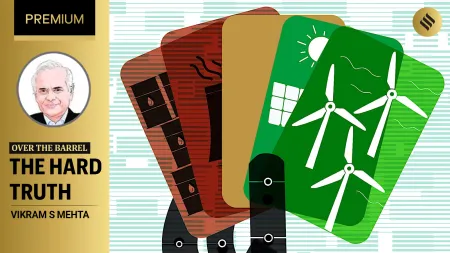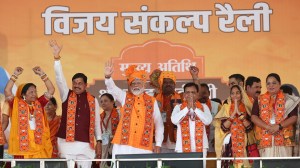- India
- International
UPSC Essentials | Daily subject-wise quiz : Environment, Geography, Sci-Tech MCQs on UNFF, Earth Day, ethanol blending and more (Week 55)
Are you preparing for UPSC CSE Prelims 2024? Check your progress and revise your topics through this quiz on Environment, Geography, Science and Technology.
 Earth Day is celebrated on April 22 every year and is a day when we focus on environmental conservation efforts and plans. Find a question on Earth Day in today's quiz. (Image credit: shameersrk on Pixabay)
Earth Day is celebrated on April 22 every year and is a day when we focus on environmental conservation efforts and plans. Find a question on Earth Day in today's quiz. (Image credit: shameersrk on Pixabay)UPSC Essentials brings to you its initiative of subject-wise quizzes. These quizzes are designed to help you revise some of the most important topics from the static part of the syllabus. Each day, we will cover one new subject. Attempt today’s subject quiz on Environment, Geography, Science and Technology to check your progress. Come back tomorrow to solve the Economy Quiz.
🚨 The Indian Express UPSC Essentials brings to you the April edition of its monthly magazine. Click Here to read. Share your views and suggestions in the comment box or at manas.srivastava@indianexpress.com🚨
QUESTION 1
With reference to the United Nations Forum on Forests (UNFF), consider the following statements:
1. It encourages the management, conservation, and sustainable development of only dry deciduous forests.
2. India is the founding member of UNFF.
3. The UN General Assembly adopted the first-ever UN Strategic Plan for Forests for the period of 2020-2025.
How many of the statements given above are correct?
(a) Only one
(b) Only two
(c) All three
(d) None
QUESTION 2
With reference to the Earth Day, consider the following statements:

1. It was first observed in 1970 triggered by the Santa Barbara oil spill.
2. The landmark Paris Agreement, which set a common target to reduce global greenhouse emissions, was signed on Earth Day 2018.
3. The theme for the year 2024 is “Invest in Our Planet”.
How many of the statements given above are correct?
(a) Only one
(b) Only two
(c) All three
(d) None
QUESTION 3
With reference to ethanol, consider the following statements:
1. Ethanol yields from grains are higher than from molasses.
2. Under the ethanol blending programme, the government has fixed the target of 20% blending of ethanol with petrol by 2025.
Which of the statement(s) given above is/are correct?
(a) 1 only
(b) 2 only
(c) Both 1 and 2
(d) Neither 1 nor 2
QUESTION 4
With reference to the Indelible ink used during the voting, consider the following statements:
1. It contains ammonium nitrate.
2. It is made up of colourless compound which becomes visible when exposed to ultraviolet light.
3. The ink contains solvent like alcohol which allows its faster drying.
How many of the statements given above are correct?
(a) Only one
(b) Only two
(c) All three
(d) None
QUESTION 5
Consider the following diseases:
1. Diabetes
2. Hypertension
3. Abdominal obesity
4. Hypercholesterolemia
How many of the above are non-communicable diseases?
(a) Only one
(b) Only two
(c) Only three
(d) All four
ANSWERS TO THE MCQs
1. (a)
FYI:
According to the United Nations Department of Economic and Social Affairs Forests,
— The Ministry of Environment, Forest, and Climate Change is hosting a Country-Led Initiative (CLI) event as part of the United Nations Forum on Forests (UNFF) at the Forest Research Institute (FRI) in Dehradun, Uttarakhand.
— The United Nations Forum on Forests encourages the management, protection, and sustainable development of all types of forests. Hence, statement 1 is not correct.
— India has the distinction of being a founding member of UNFF. Hence, statement 2 is correct.
— The UN General Assembly approved the first-ever UN Strategic Plan for Forests for the period 2017-2030. Hence, statement 3 is not correct.
— This Strategic Plan provides a global framework for efforts at all levels to achieve sustainable management of all types of forests, including trees outside of forests, as well as prevent deforestation and forest degradation.
Therefore, option (a) is the correct answer.
(Source: http://www.un.org)
2. (a)
FYI:
— April 22 is observed as Earth Day, an international event celebrated around the world to pledge support for environmental protection. The year 2024 marks the 54th anniversary of the annual celebrations.
— Earth Day was first observed in 1970 when 20 million took to the streets to protest against environmental degradation. The event was triggered by the 1969 Santa Barbara oil spill and other issues such as smog and polluted rivers. Hence, statement 1 is correct.
— Earth Day continued to play an important role in environmental activism. The landmark Paris Agreement, which brings almost 200 countries together to set a common target to reduce global greenhouse emissions, was signed on Earth Day 2016. Hence, statement 2 is not correct.
— In 2009, the United Nations designated Earth Day as International Mother Earth Day.
— Earth Day aims to “build the world’s largest environmental movement to drive transformative change for people and the planet.”
— The theme for the year 2024 is ‘Planet vs. Plastics’. The theme highlights the threat plastics pose to the planet and human health. It calls for an end to all plastic waste by demanding a 60% reduction in the production of plastics by the year 2040. Hence, statement 3 is not correct.
Therefore, option (a) is the correct answer.
3. (c)
FYI:
— India’s ethanol production programme has come a long way in the past five years, both in terms of the quantities supplied by sugar mills/distilleries to oil marketing companies (OMCs) and the raw material used — from cane molasses and juice to rice, damaged grains, maize and, down the line, millets.
— Ethanol is basically 99.9% pure alcohol that can be blended with petrol. It is different from the 94% rectified spirit having applications in paints, pharmaceuticals, personal care products and other industries, and 96% extra neutral alcohol that goes to make potable liquor.
— Ethanol yields from grains are actually higher than from molasses. One tonne of rice can produce 450-480 litres of ethanol, while it is 450-460 litres from broken/damaged grains, 380-400 litres from maize, 385-400 litres from jowar (sorghum) and 365-380 litres from bajra and other millets. Hence, statement 1 is correct.
— Under the Ethanol Blending Pragramme (EBP), Government has fixed the target of 20% blending of ethanol with petrol by 2025. Hence, statement 2 is correct.
Therefore, option (c) is the correct answer.
4. (b)
FYI:
— Mysore Paints & Varnish Ltd., a Karnataka Government Undertaking which is the sole manufacturer of the ink in India, told DD News that around 26.5 lakh phials or small bottles (with a capacity of 10 ml each) will be made for this election cycle.
— The Representation of the People Act (RoPA) of 1951 mentions the ink. Section 61 states that rules may be made under the Act “for the marking with indelible ink of the thumb or any other finger of every elector who applies for a ballot paper or ballot papers for the purpose of voting at a polling station before delivery of such paper or papers to him.”
— Indelible ink contains silver nitrate. It is a colourless compound which becomes visible when exposed to ultraviolet light, including sunlight. Hence, statement 1 is not correct and statement 2 is correct.
— The higher silver nitrate’s concentration, say around 20 percent, the higher will be the ink’s quality, according to a report from the United Nations Development Programme.
— This water-based ink also contains a solvent like alcohol to allow its faster drying. Hence, statement 3 is correct.
Therefore, option (b) is the correct answer.
5. (d)
FYI:
— According to a recently published study by the Madras Diabetes Research Foundation and the Indian Council of Medical Research, India has approximately 101 million people with diabetes and another 136 million people in pre-diabetes stages.
 Prevalence of non-communicable diseases in India. (Source: ICMR)
Prevalence of non-communicable diseases in India. (Source: ICMR)
The study found:
(i) More than a quarter of the population was either diabetic or in pre-diabetic stage. 11.4 per cent of India’s population or 101 million people are living with diabetes. Whereas 15.3 per cent of the population or an additional 136 million people are pre-diabetic.
(ii) The prevalence of hypertension or high blood pressure was found to be higher still in the country. Around 35.5 per cent of the population or 315 million people are living with the condition.
(iii) 28.6 per cent of the population would be considered to be obese as per the BMI (body mass index) measure, 39.5 per cent of the population or 351 million people had abdominal obesity.
— The prevalence of diabetes stood at 16.4 per cent in urban India as compared to 8.9 per cent in rural India.
— The prevalence of diabetes was higher in the Southern states and a few north Indian states such as Delhi and Punjab. The prevalence of diabetes was lowest in Uttar Pradesh at 4.8 per cent of the population.
Therefore, option (d) is the correct answer.
Previous Daily Subject-Wise-Quiz
Daily subject-wise quiz — Polity and Governance (Week 55)
Daily Subject-wise quiz — History, Culture, and Social Issues (Week 55)
Daily subject-wise quiz — Environment, Geography, Science and Technology (Week 54)
Daily subject-wise quiz — Economy (Week 54)
Daily subject-wise quiz – International Relations (Week 54)
Subscribe to our UPSC newsletter and stay updated with the news cues from the past week.
May 07: Latest News
- 01
- 02
- 03
- 04
- 05





































